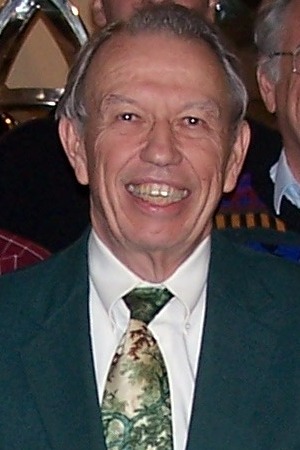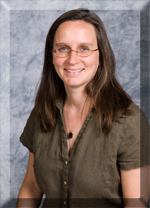|
|
|
|
|
|
|
|
|
|
 |
 |
 |
|
 |
|

George Andrews
President, American Mathematical Society
Pólya Lecturer
Adventures With Partitions
The theory of partitions is forever intriguing because it has both simplicity and surprise. On the one hand, it is the study of writing integers as sums of integers. What could be simpler? On the other hand, it is tied to applications stretching from spiral, self-avoiding walks to random graphs to unsolved questions in positivity. And its history is deeply entwined with the work of the Indian genius, Ramanujan. In this talk, I shall try to convey some of the excitement and surprise of this venerable subject by examining a few of the topics I have mentioned.
|
George E. Andrews is Evan Pugh Professor of Mathematics at Penn State University and an expert on the theory of partitions. He has a long-term interest in the work of S. Ramanujan, whose last notebook he unearthed in 1976. He is now collaborating with Bruce Berndt on a series of volumes explicating the brilliant and sometimes enigmatic ideas in this notebook.
Andrews has received many awards for his teaching and service to the profession. These awards include the Allegheny Region Distinguished Teaching Award from the MAA, and the 1999 Centennial Award from the Department of Mathematics at the University of Pennsylvania “in recognition of (his) contributions to pure mathematics and mathematics education.” In 2007, he was one of three finalists nation-wide for the Robert Foster Cherry Teaching Award for Great Teaching. He is currently President of the American Mathematical Society.
His research has also received recognition. Andrews was elected to the American Academy of Arts and Sciences in 1997, and to the National Academy of Sciences (USA) in 2003. In 2009, he was selected SIAM Fellow. He holds honorary degrees from the Universities of Parma, Florida, and Waterloo.
|
|

Catherine Bénéteau
University of South Florida Discrete Wavelets and Image Compression
Wavelet theory was an immensely popular research area in the 1990’s that brought together ideas from people working in completely different areas such as electrical engineering, physics, mathematics, and computer science. Even in mathematics, the subject attracted researchers from real and harmonic analysis, statistics, and approximation theory. Applications of wavelets turn up in lots of different places such as identifying art or handwriting forgeries, JPEG2000 image compression, and FBI fingerprint storage algorithms, among others. In this talk, I will show you how simple the Discrete Haar Wavelet transform is, how it can be used in image compression, and its connections to some beautiful mathematics.
|
Catherine Bénéteau is an Associate Professor of Mathematics at the University of South Florida. She is originally from Montréal, Canada, and got her master’s degree at McGill University and then her Ph.D. at the State University of New York, Albany, under the direction of Boris Korenblum, in complex analysis. She has previously taught at Seton Hall University, in New Jersey, and at the Center for Talented Youth, a program run by the Johns Hopkins University.
Her research interests involve extremal problems in analytic function spaces. She has also worked on integrating applications of mathematics such as wavelets and image processing into the undergraduate curriculum. She has team taught courses with faculty in the College of Education and has created professional development courses for elementary school teachers. She is a Project NExT fellow, and was recently awarded the 2009-10 Outstanding Undergraduate Teaching Award at the University of South Florida.
|
|

Paul Zorn
MAA President
Picturing Analysis
"Thinking in pictures" is standard operating procedure in teaching and learning geometry, graph theory, elementary calculus, and other visually rich areas of mathematics. Less obvious, but still valuable, are visual insights into key ideas and theorems from real and complex analysis. It's one thing to know what, say, differentiability and integrability mean, but how do they look? How do poles and essential singularities of complex functions look in color? Can countability be seen? I'll give examples and suggest implications for better teaching, learning, and understanding.
|
Paul Zorn was born in India, and had his primary and secondary schooling there. He did his undergraduate work at Washington University in St. Louis, and his Ph.D., in complex analysis, at the University of Washington, Seattle. Since 1981 he has been on the mathematics faculty at St. Olaf College, in Northfield, Minnesota.
Paul's special interests, beyond complex analysis, include instructional computing and mathematical exposition. Combining these interests, he has written (with co-author Arnold Ostebee) a series of calculus textbooks that draw on computing to promote graphical, numerical, and symbolic viewpoints. In 1987 he received the MAA's Allendoerfer Award for an article on Louis de Branges' proof of the Bieberbach conjecture. He has also worked as editor for several issues of the American Mathematical Society's occasional publication What's Happening in the Mathematical Sciences. His most recent textbook, Understanding Real Analysis, was published in 2010 by A K Peters.
Much of Paul's MAA-related history centers on publications. His MAA-related editorial work includes service with FOCUS, the New Mathematical Library book series, and Mathematics Magazine, of which he was editor from 1995 to 2000. His two-year stint as MAA President begins in 2011.
|
|
 |
|
 |
 |
 |
|
| |